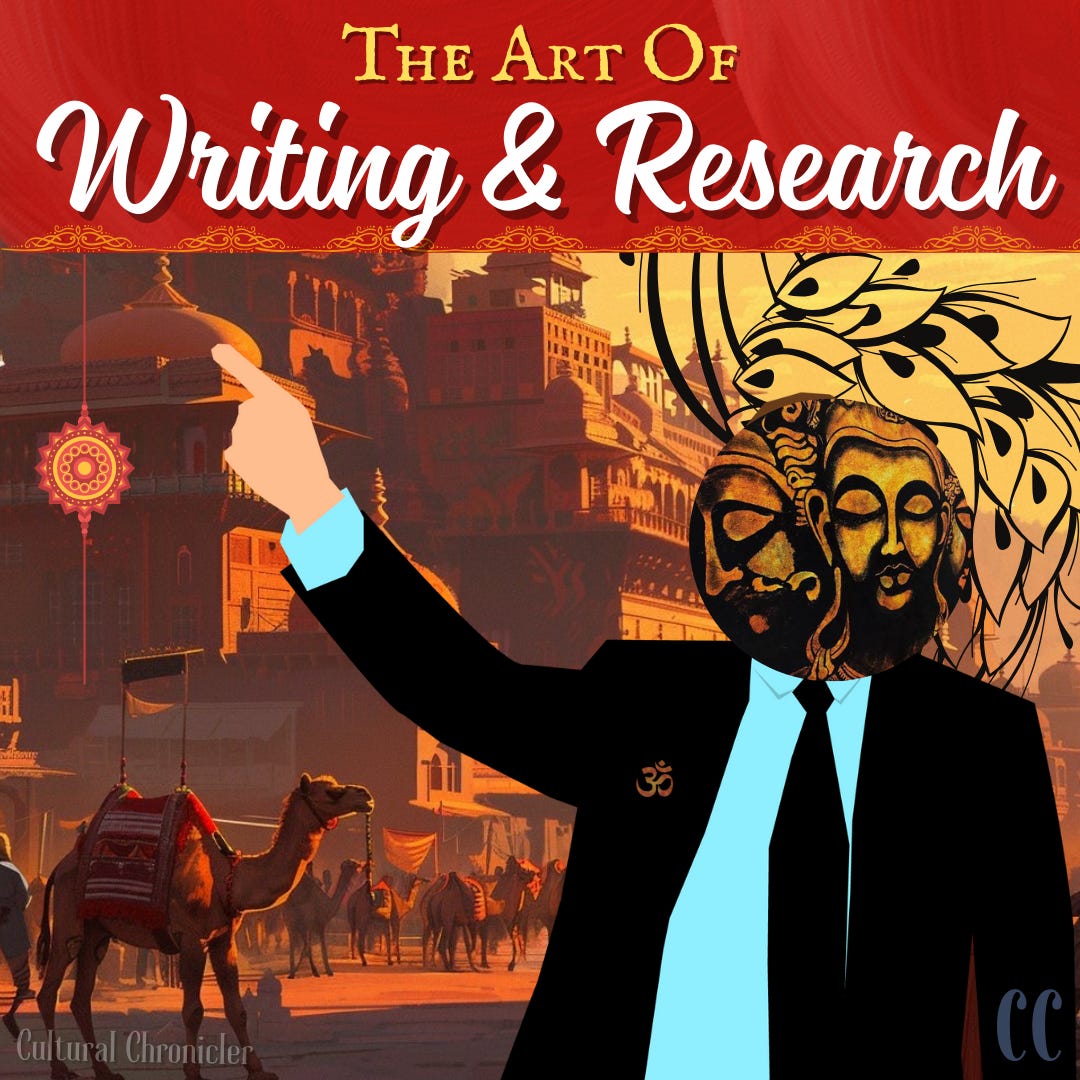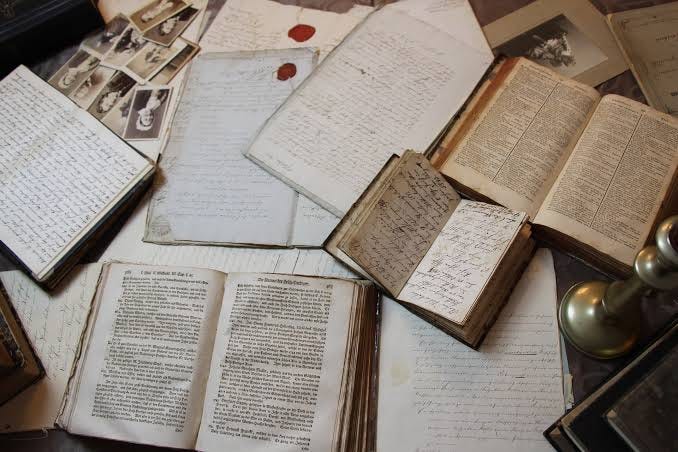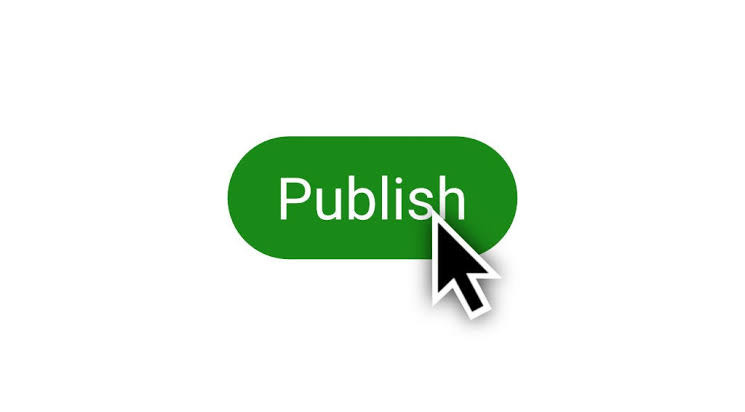How I Research & Write Stuff
People sometimes ask how I come up with ideas and write about them like I actually know what I’m talking about. So here’s the unsolicited answer, in full chaotic detail.
Writing isn’t magic. It’s mostly caffeine, curiosity, and a borderline obsessive need to know what’s actually true.
So here’s a step-by-step breakdown of my writing process. (Spoiler: It’s chaotic, messy, and obsessive. It’s sometimes brilliant and sometimes delusional. Hard to say which is which.)
Step 1: The Idea Factory (aka My Brain on the Internet)
Short answer: I’m terminally online.
Long Answer: Look, I don’t meditate in the Himalayas waiting for divine inspiration. Ideas don’t fall from the sky.
Most of mine come from doomscrolling on X (yes, the app formerly known as Twitter), Reddit rabbit holes, or those deeply cursed niche conversations with friends — both online and in the mythical land of Real Life.
Sometimes I see someone confidently spewing nonsense, and that’s when the inner gremlin perks up and goes, Okay, guess I’m writing now. So I jot down anything that:
> Seems misunderstood or misrepresented.
> Smells like a myth we all just accept.
> Is super obscure but oddly fascinating.
> Is well-known but deserves a snack-sized breakdown for you, the lazy reader (don’t lie, you love it).
Curiosity + internet-induced rage = the fuel that powers this operation.
And then there are times when I just stumble into something wild while researching something else. Like I’ll start out trying to understand the economic policies of the British Raj and end up reading about how opium smuggling funded half the colonial empire.
Oops? Now, tell me, how can I NOT write about that?
Step 2: Time to Nerd Out
Once a topic latches onto my brain like a parasite, I start digging. First stop: books (usually in the form of PDFs) and articles.
If I’m lucky, there’s a well-written book or paper that dives straight into the topic. If I’m really lucky, I find a primary source. That’s the gold standard. Letters, records, reports from the time — stuff that hasn’t been filtered through ten layers of interpretation.
But I’m gonna be honest here: primary sources aren’t always easy to get. Maybe they’re locked in an archive, written in archaic Persian, or worse — formatted like a cursed PDF from the 90s. So I turn to secondary sources: historians, scholars, journalists who’ve already done part of the legwork.
I read all of it with a healthy dose of skepticism. Who wrote this? What’s their bias? Are they just parroting someone else? I’m happy to work with them when needed, as long as they aren’t written by conspiracy theorists or Wikipedia editors high on Red Bull.
Cross-referencing is key. I don’t trust just one source. If three authors with no obvious connection are saying similar things, that’s promising. If they’re contradicting each other, even better — now we’re cooking with drama.
So, to summarise, here’s my rough hierarchy of sources:
> Books: Ideally good ones. Sometimes great ones. Occasionally terrible ones that still have good footnotes.
> Research papers: if I can find them, I read them. If they’re behind a paywall, I become a pirate.
> Primary sources: Original letters, reports, documents, inscriptions, eyewitness accounts or their translations.
> Other sources: because let’s be honest, not everything has a neat little primary source available in English, digitized, and accessible at 3 AM.
Step 3: Turning Chaos into Coherent Words
Words are, in my not-so-humble opinion, our most inexhaustible source of magic. Capable of both inflicting injury, and remedying it.
— Albus Dumbledore
Now comes the fun (read: painful) part. I start writing. It’s messy. Chaotic. Probably illegal in some countries. I’m not some monk who writes in a clean, distraction-free cabin with incense burning.
I write in bursts. Notes everywhere. Tabs open like I’m running a call center. Half the time, I’m switching between my browser, Notes, and whatever doc I’m typing in.
But eventually, the pieces start to click. I structure the article around what I want you, the reader, to walk away with. I’m not trying to dump everything I’ve read onto the page. I’m trying to make it make sense — and make it fun to read.
Tone is everything. I’m not trying to sound like a textbook. I want it to feel like you’re talking to a slightly unhinged friend at the bar (or café, if you’re a teetotaller like me) who’s explaining something complicated in a way that actually sticks.
I want my writing to be serious when needed, sarcastic when appropriate, and always, always human — preferably one with some sense of humor and at least one working brain cell.
Step 4: Walk Away From the Keyboard, You Maniac
After the first draft, I don’t immediately hit publish. That’s a rookie move. Because when you write something and immediately read it back, it either feels like the smartest thing ever written… or the ramblings of a sleep-deprived moron.
Both are lies. Time brings perspective. So I let it sit. One day, two max. Then I return with fresh eyes and read it like someone else wrote it.
And then I edit. Ruthlessly. I cut what doesn’t need to be there. If I’ve repeated myself (which I often do), I clean it up. I tweak the structure, fix the flow, sharpen the sentences, and make sure it reads like a finished piece, and not like one of my manic brain dumps.
I also check tone again. If I sound too academic, I loosen it up. If I’m getting too ranty, I dial it back. The goal is clarity plus personality. You should finish the piece feeling smarter, not drained.
Step 5: Dress It Up Before You Show It Off
With the article cleaned up, I go hunting for images. Depending on the topic, that could be old photographs, maps, charts, memes (sometimes, yes), or visual aids that help the reader get the point faster. After that, I make a visually appealing thumbnail to go along with it.
If I’m posting it on Substack, I upload everything there, format it to look clean and readable, and do one final proofread as I go.
If I’m turning it into a thread for X (or Twitter. Whatever.), I break it down into tweet-sized chunks, making sure each one flows into the next and keeps the reader hooked.
Then I hit publish. And throw it to the wolves. Sometimes people love it. Sometimes they nitpick one sentence to death. Sometimes there’s just… silence (that one hurts more than it should).
Final Thoughts (aka the Obligatory Life Lesson)
Look, this process works for me. That doesn’t mean it’ll work for you. If you’re trying to write or research, don’t get trapped into thinking there’s a single correct way to do it. There isn’t.
JK Rowling uses outlines. Stephen King doesn't.
Hemingway wrote everyday. Harper Lee didn't.
Brandon Sanderson writes best at 1:00 am. William Faulkner at 9:00 am.
The takeaway? Do you.
What works for me might be a disaster for you, and that’s perfectly fine, duh. You do you. Try stuff. Steal what works. Toss what doesn’t. Write badly, then rewrite better. Repeat.
Writing is a craft. Research is a habit. The rest is just packaging. Now go write something worth reading. Or at least worth arguing about in the comments.


















This was funny! How long do you take to write a newsletter article?
I found another article of yours that was so well organized, I thought it might be AI. So when I found this, it made me happy and was extremely useful. Your style of writing is engaging and informative